Guntersville Reservoir on the Tennessee River is notorious for its invasive aquatic plants. The prolific sheets of vegetation seasonally cover nearly 20,000 acres of the 80,000-acre lake. Current TVA management regimes include economically and ecologically costly methods of removal. A study of the reservoir’s natural and human stakeholders revealed a key triptych of actors: beavers, bass, and boats. The individual behaviors and demands of these three stakeholders shaped this proposed temporal restoration of an unbalanced system.
Managing Public Perception Precedents // Triptychs
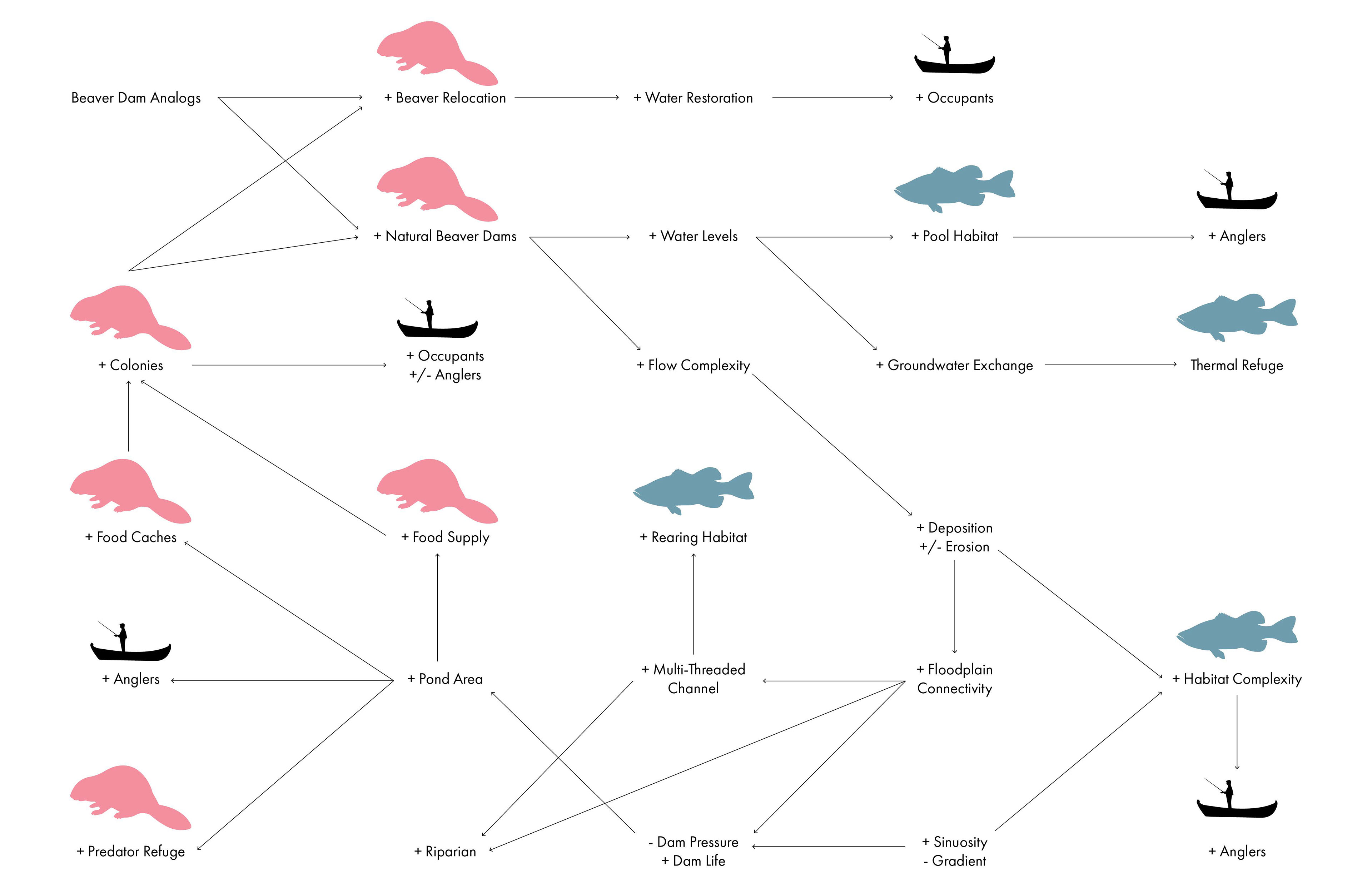
Triptych 1: Beavers, Bass, Boats
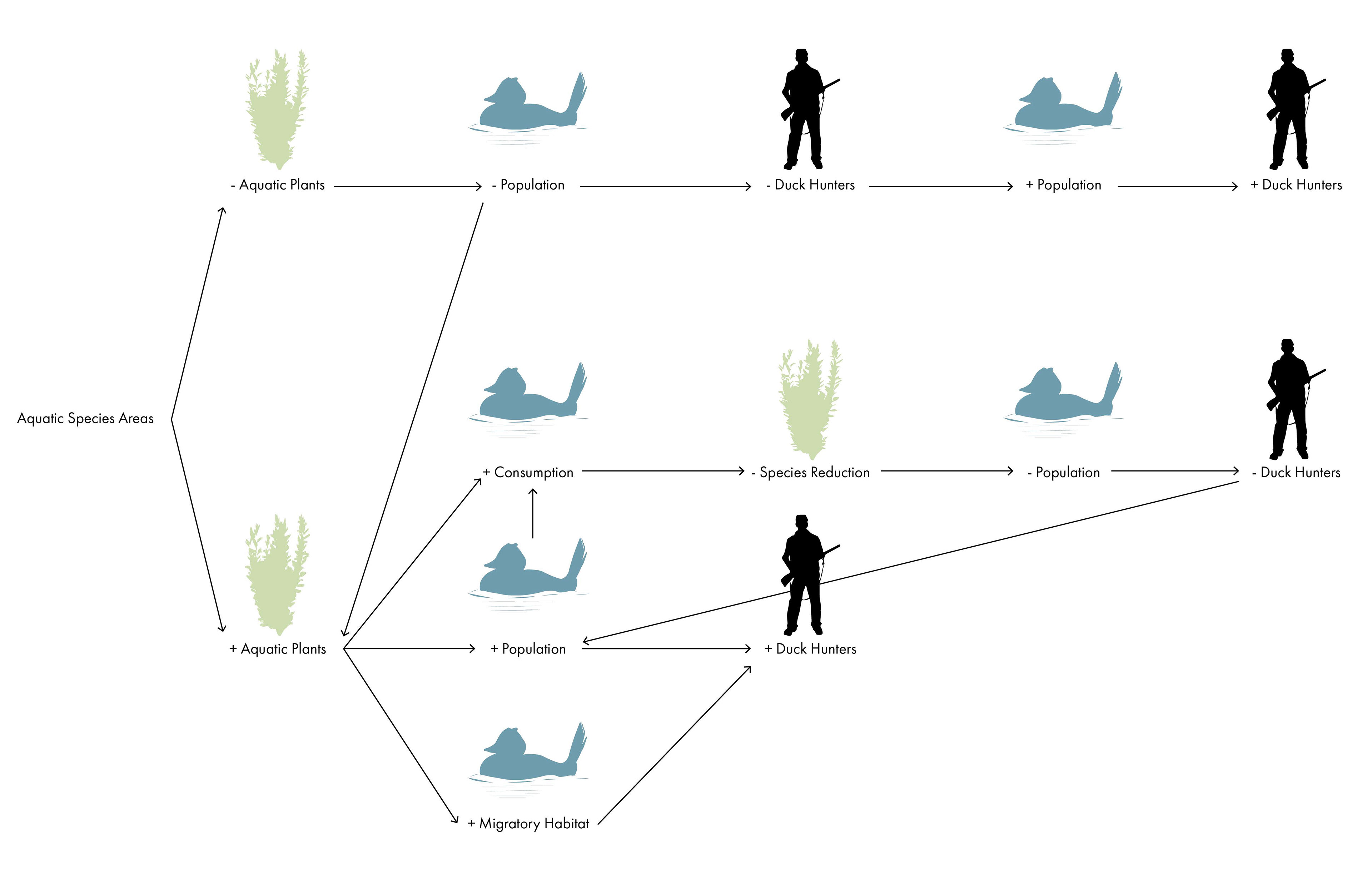
Triptych 2: Hydrilla, Ducks, Duck Hunters
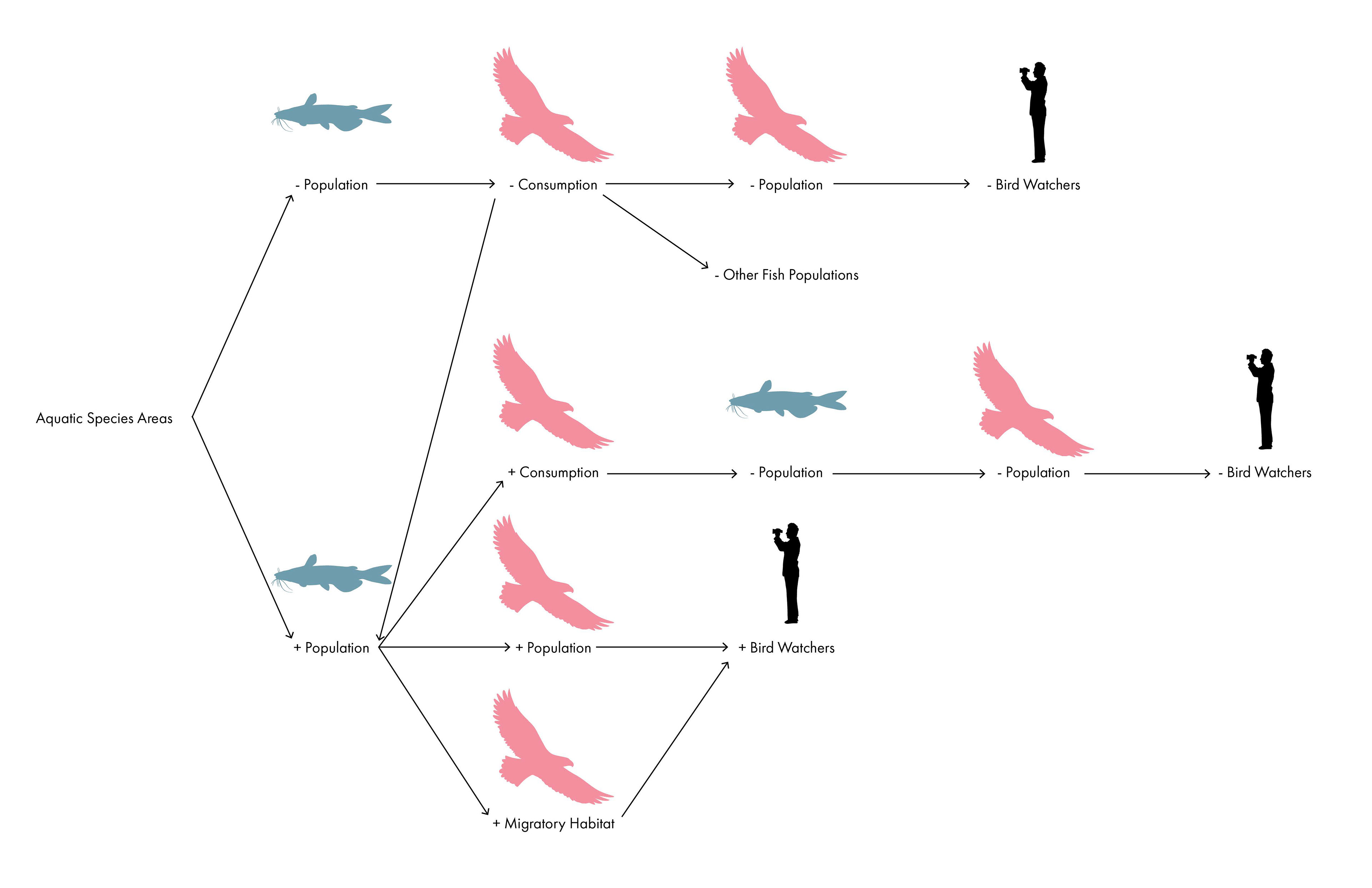
Triptych 3: Catfish, Bald Eagles, Bird Watchers
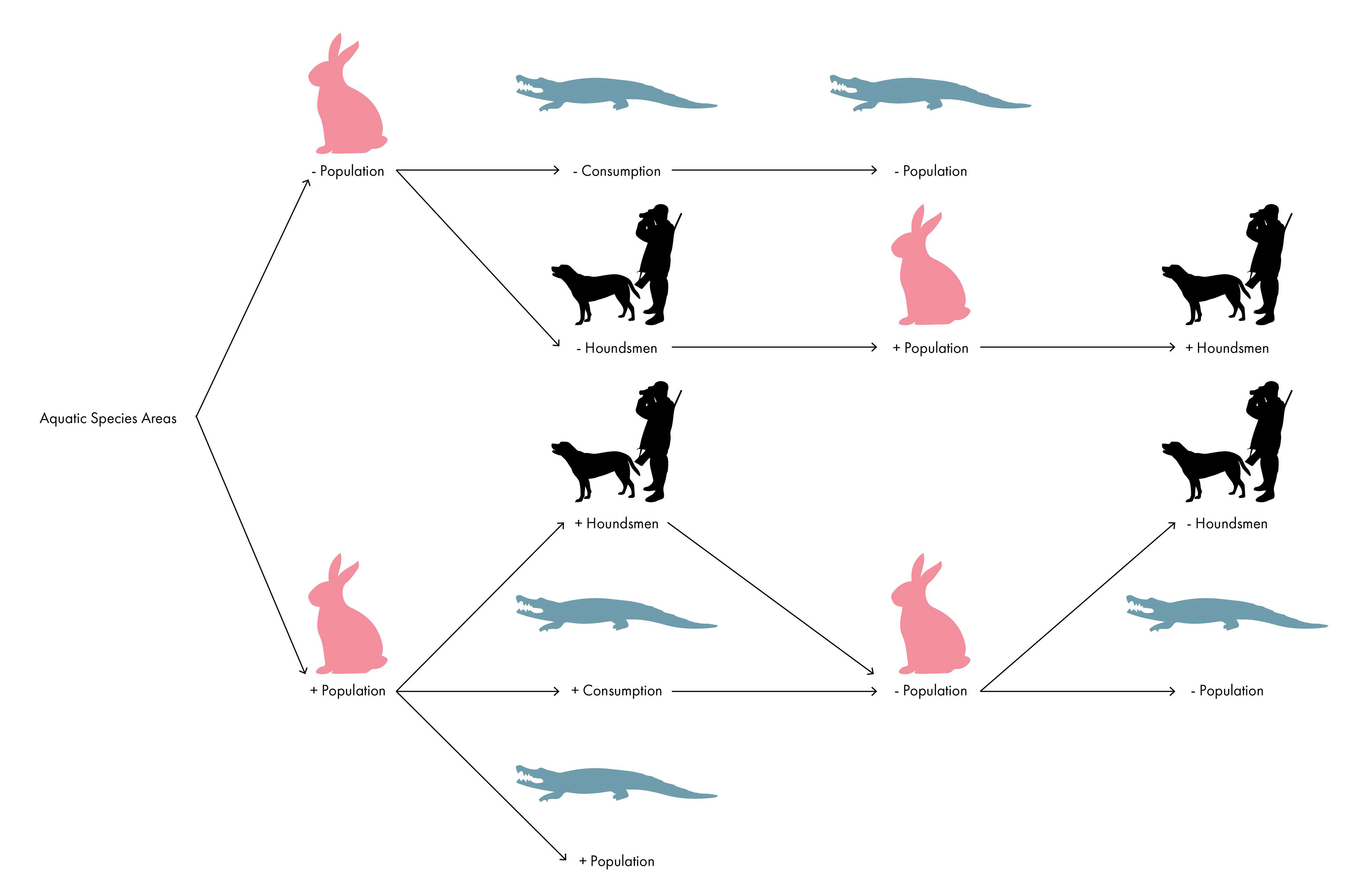
Triptych 4: Swamp Rabbits, Alligators, Houndsmen
Guntersville Water Column // Aquatic Invasives Case Study
Reservoir over Time
Inspired by the Tennessee River's fluctuating reach, this proposal identifies and reclaims a shallow peninsula for native aquatic plants and animals. By implementing a series of dams, weirs, walls, etc... the current highly intrusive maintenance practices (herbicides and harvesting) can be replaced by native actors (i.e. beavers), thereby reallocating maintenance responsibility away from the human user.
Existing Conditions // Stakeholders // Proposed Conditions
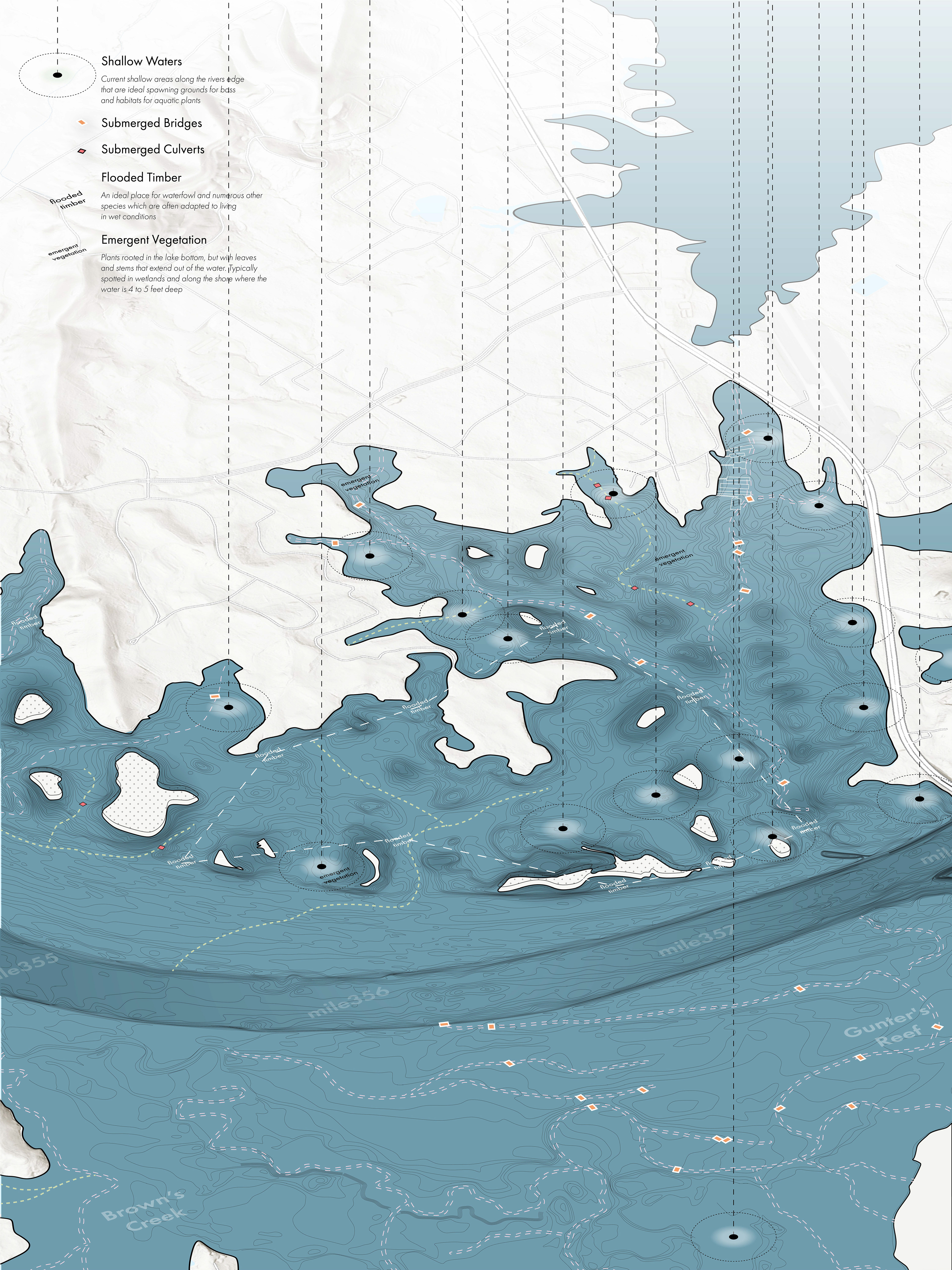
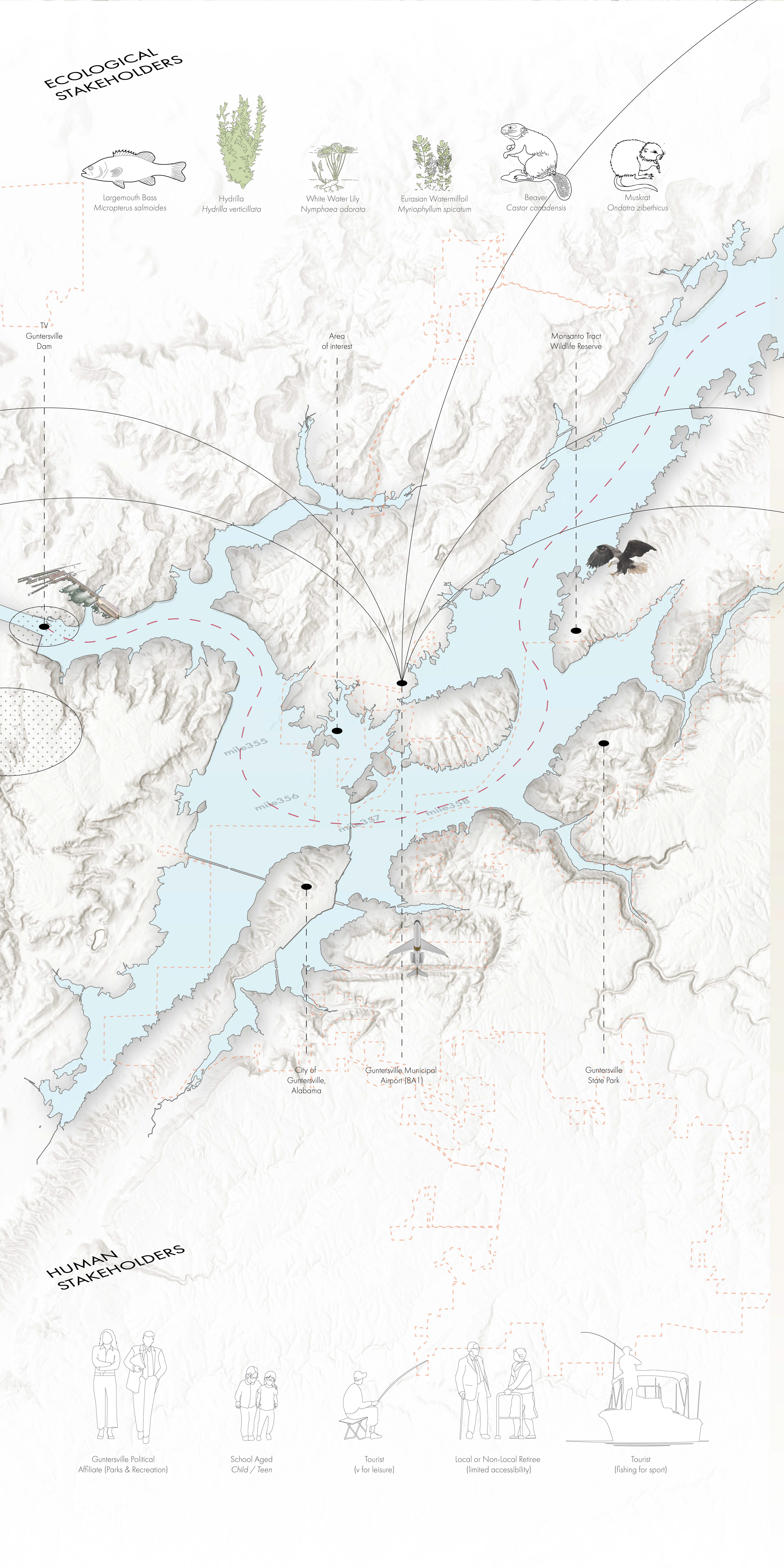
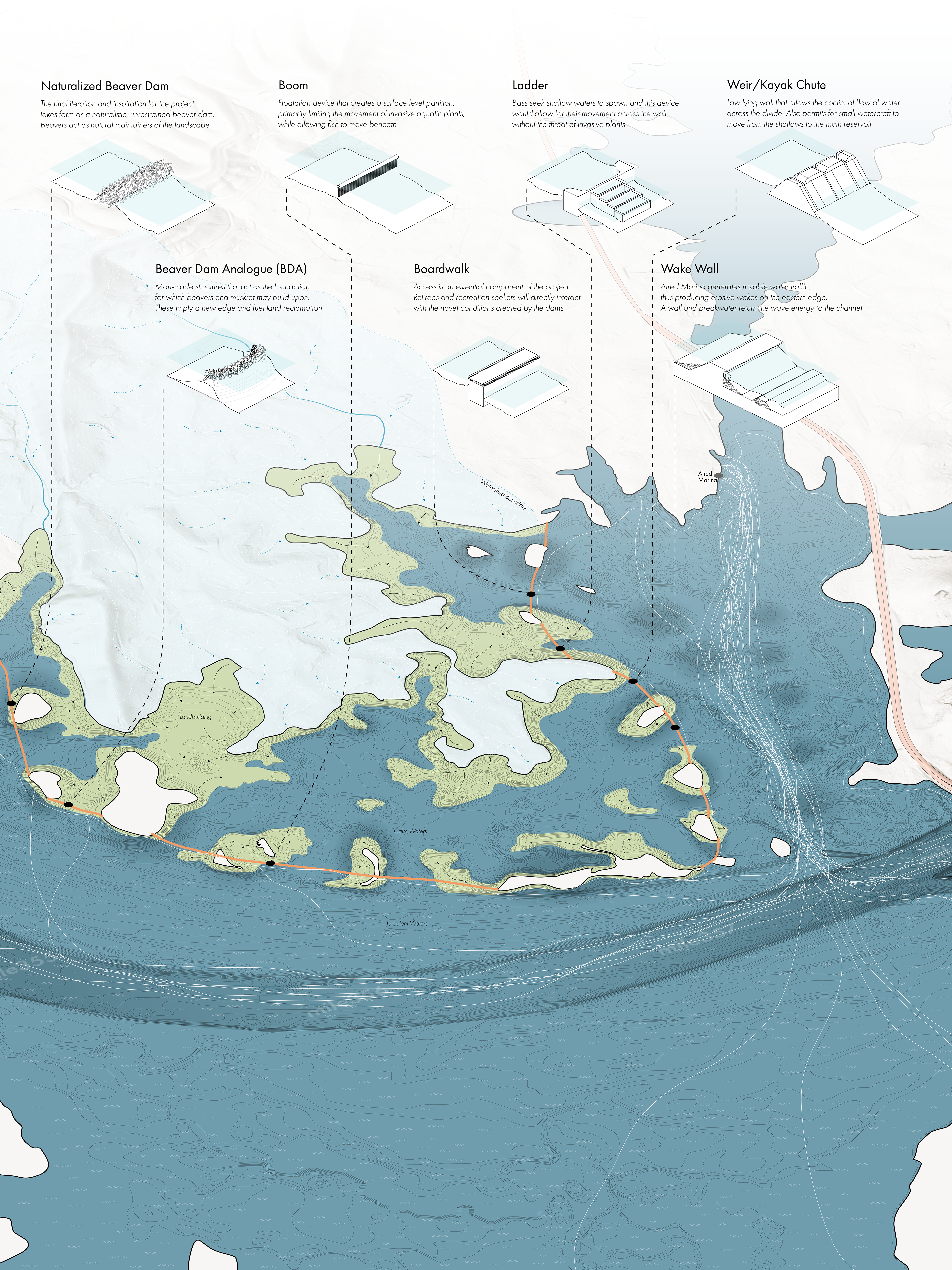
Proposed Conditions
7 Intervention Typologies
Land Development
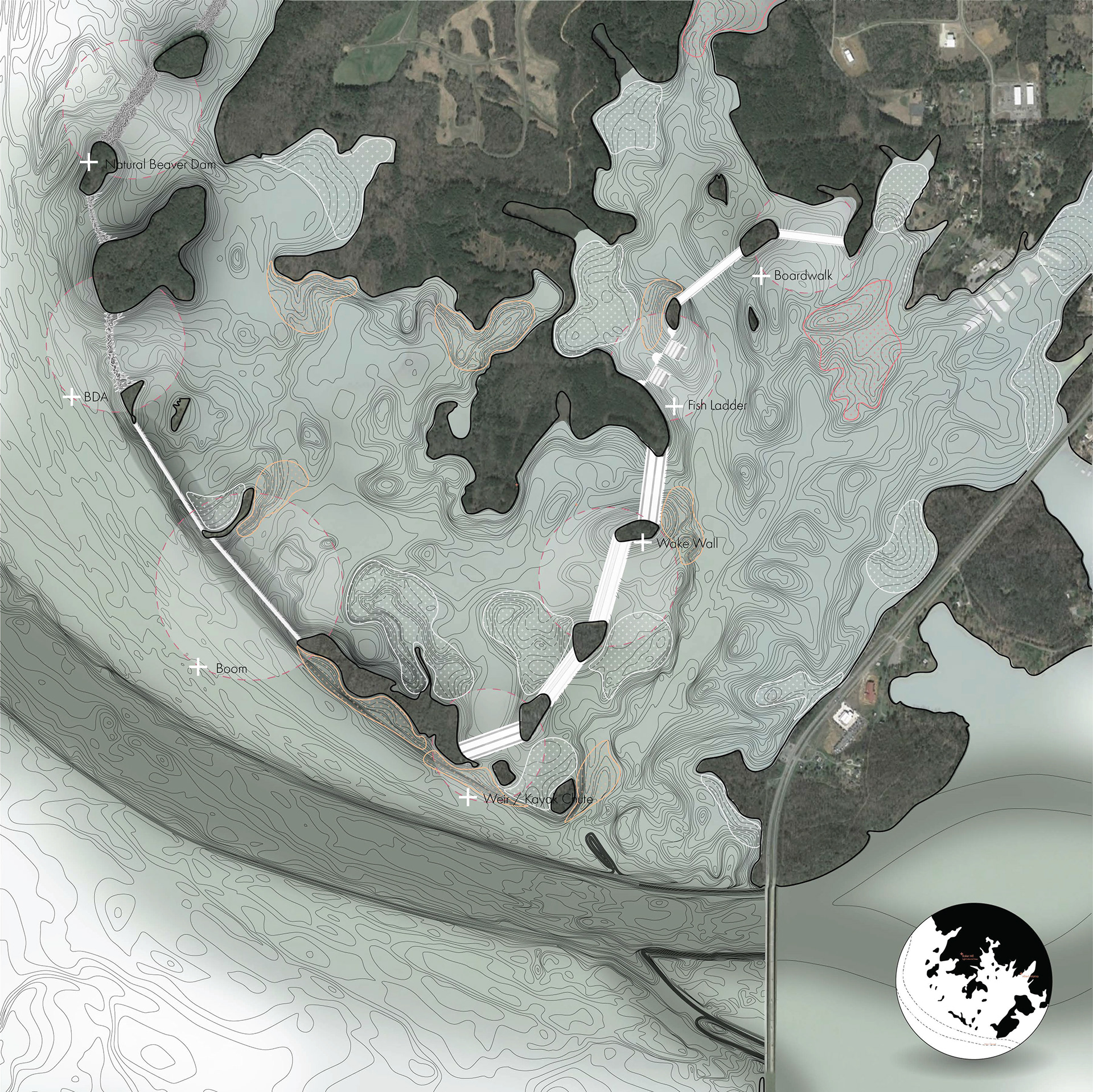
Phase 1
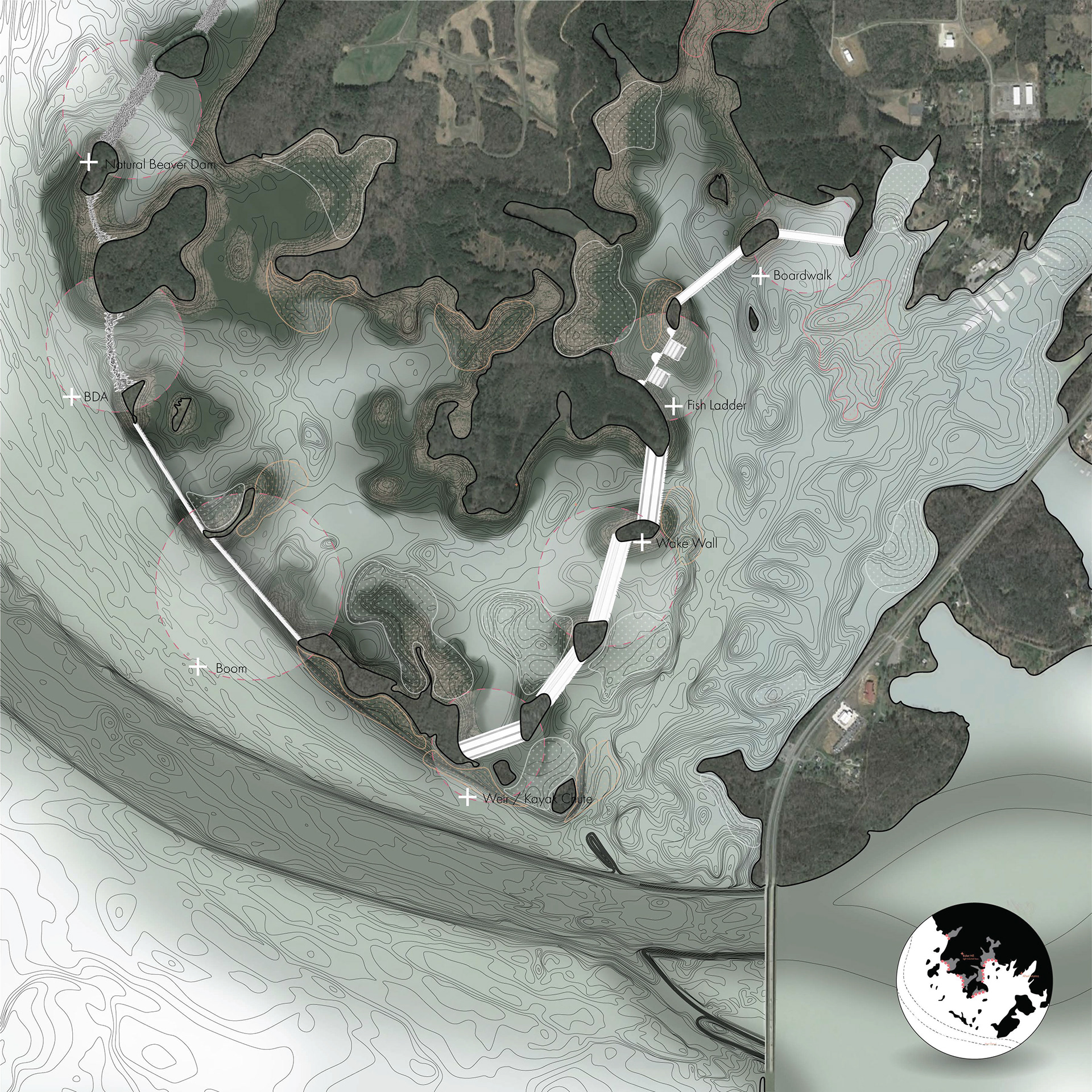
Phase 2
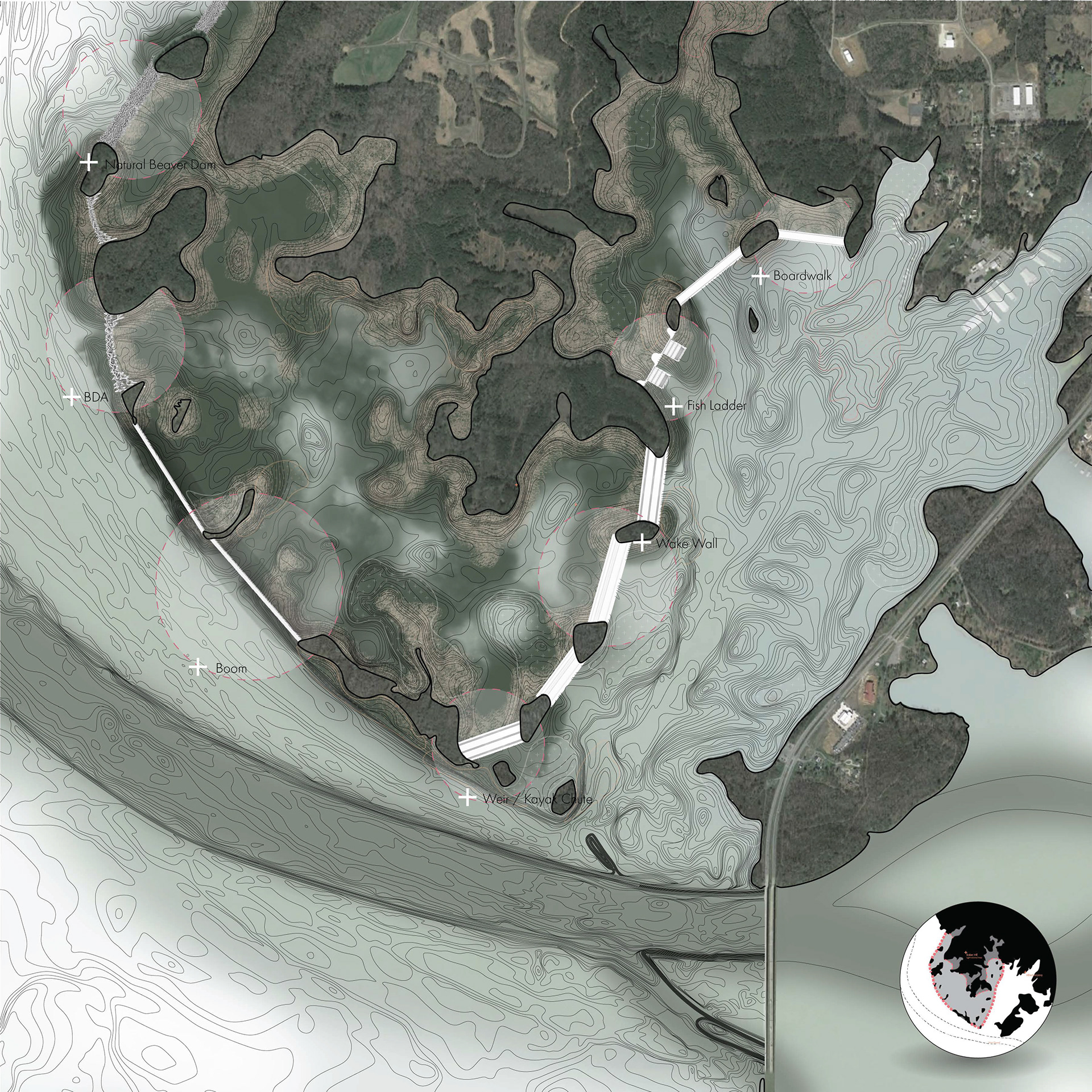
Phase 3
Staged Deterioration
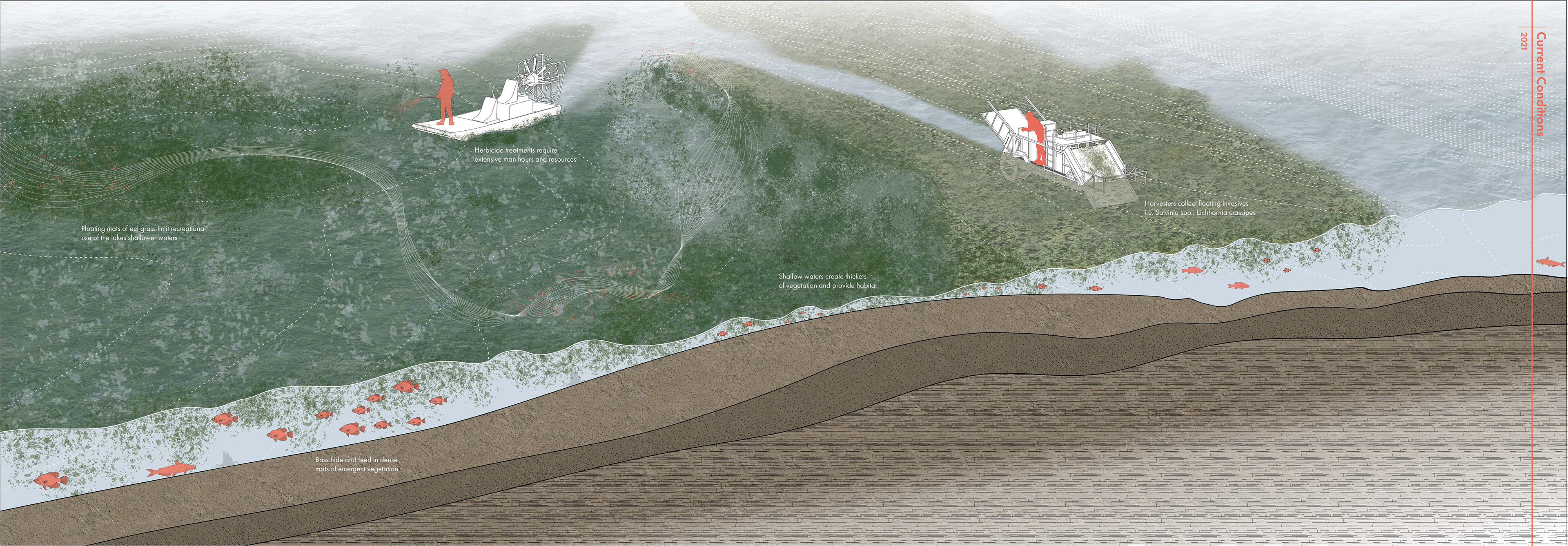
Current Conditions
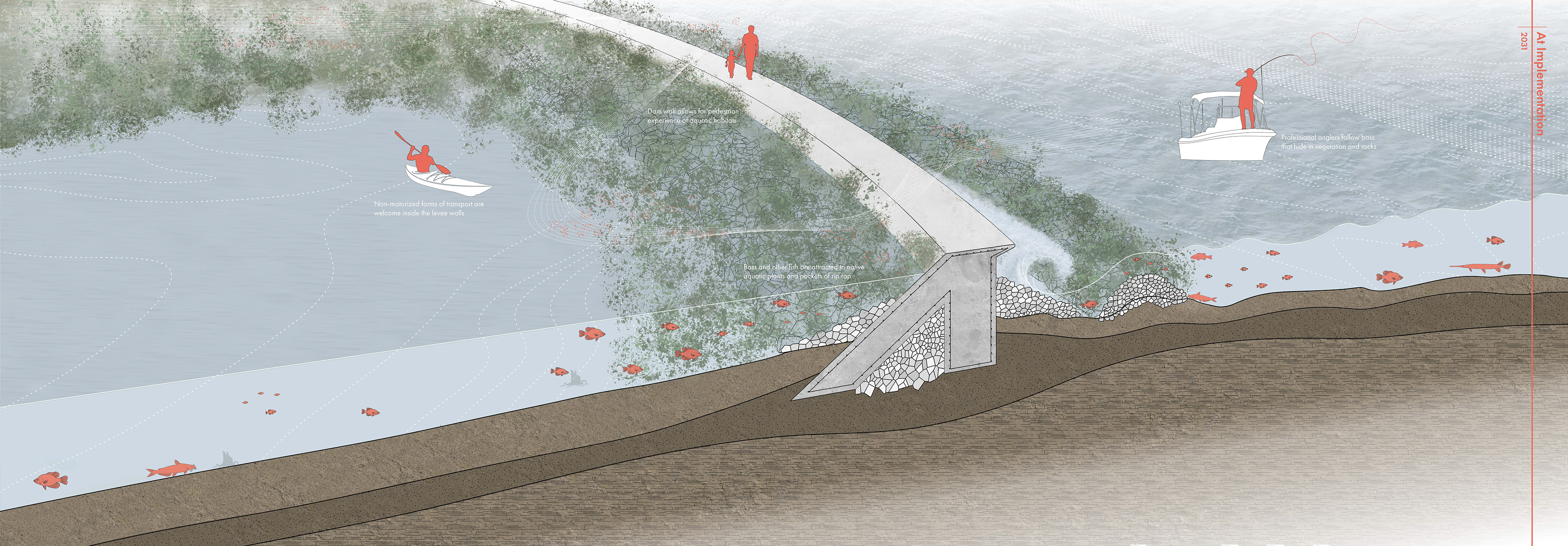
At Implementation
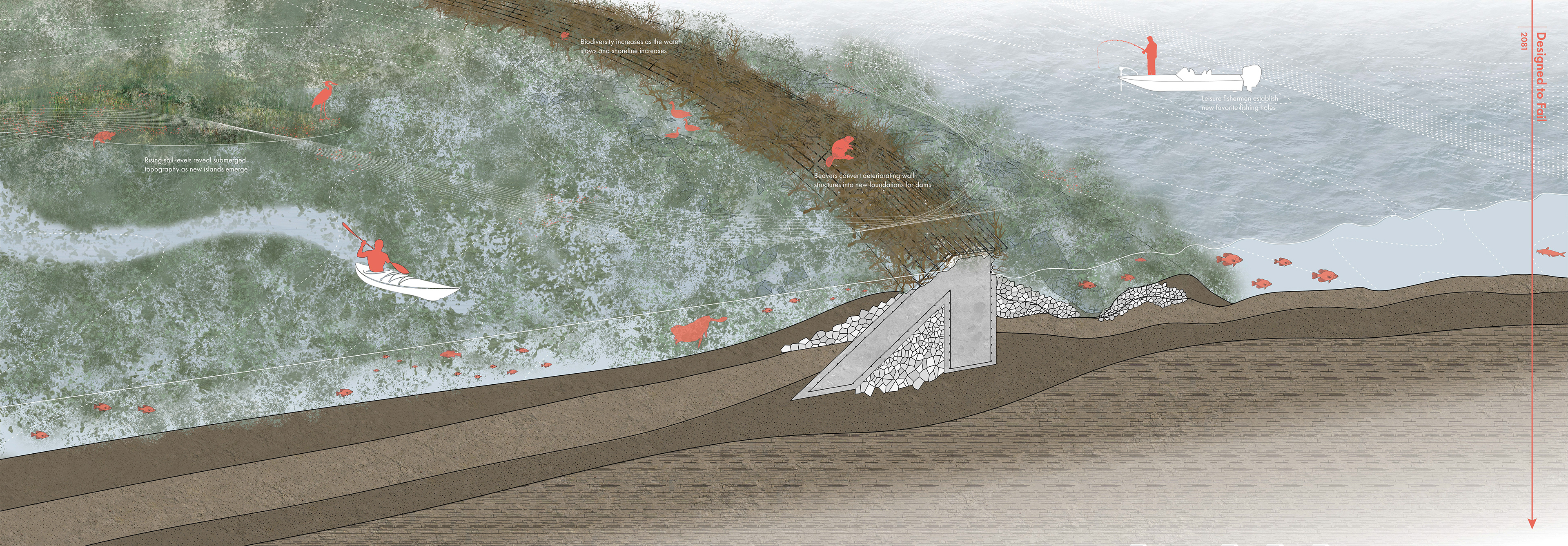
Designed to Fail
Prototype Modeling
